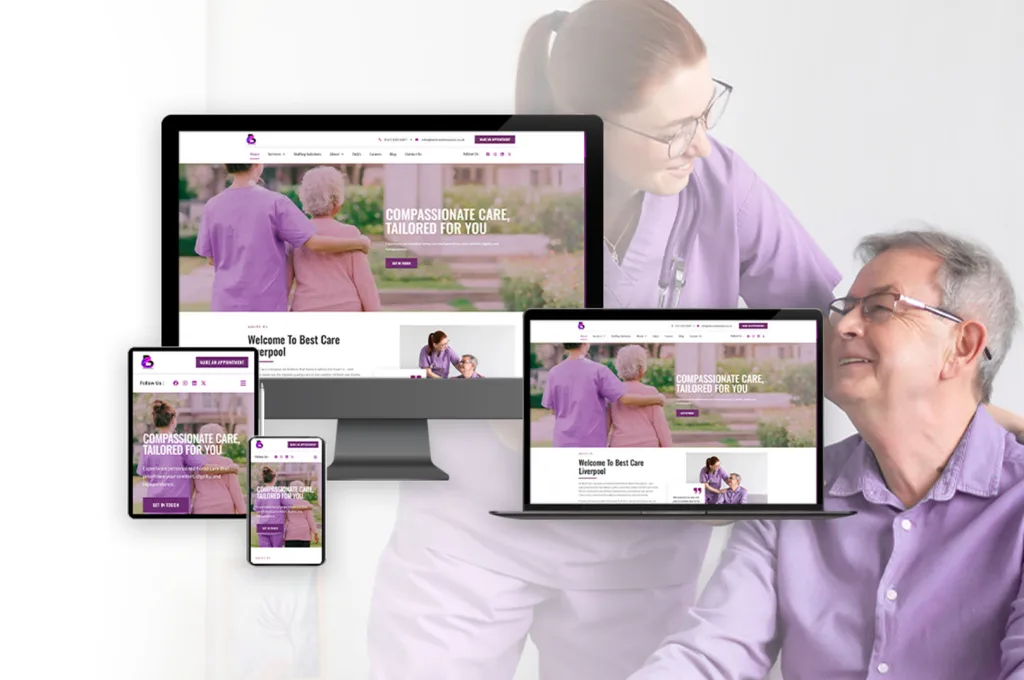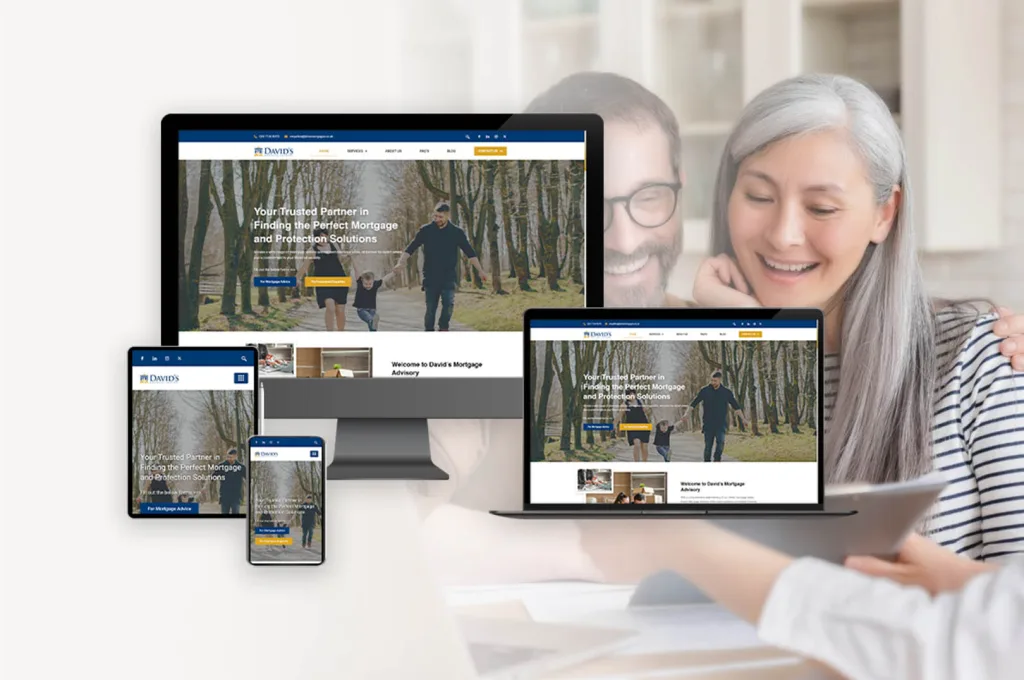Signs Of Good Web Design
Signs Of Good Web Design
Introduction
Good web design is essential for any website to be successful. It can help to create a positive user experience, increase conversions, and make your website stand out from the competition. Signs of good web design include a clean and organized layout, intuitive navigation, and a visually appealing design. Additionally, good web design should be optimized for mobile devices, have fast loading times, and be accessible to all users. By following these guidelines, you can ensure that your website is well-designed and provides a great user experience.

How to Identify Quality Web Design Through User Experience
User experience (UX) is an important factor in determining the quality of a website’s design. UX is the overall experience a user has when interacting with a website, and it is determined by a variety of factors, including the website’s navigation, content, visuals, and functionality. By understanding the elements of UX, it is possible to identify quality web design.
Navigation is a key element of UX. A website should be easy to navigate, with clear menus and labels that make it easy for users to find what they are looking for. The navigation should be consistent throughout the website, with the same menu items appearing in the same place on each page. Additionally, the navigation should be intuitive, with users able to easily find the information they need without having to search for it.
Content is also an important factor in UX. Quality web design should include content that is well-written, relevant, and engaging. The content should be easy to read and understand, and it should be organized in a logical manner. Additionally, the content should be optimized for search engines, so that users can easily find the website when searching for relevant topics.
Visuals are also an important part of UX. Quality web design should include visuals that are attractive and engaging. The visuals should be relevant to the content, and they should be optimized for different devices, such as desktop computers, tablets, and smartphones. Additionally, the visuals should be optimized for different browsers, so that they appear correctly on all devices.
Finally, functionality is an important element of UX. Quality web design should include features that are easy to use and that work as expected. The website should be responsive, so that it works correctly on all devices and browsers. Additionally, the website should be secure, with features such as encryption and secure login.
By understanding the elements of UX, it is possible to identify quality web design. Quality web design should include features that make it easy for users to navigate, find relevant content, and interact with the website. Additionally, the website should include visuals that are attractive and engaging, and it should be secure and responsive. By considering these elements, it is possible to identify quality web design through user experience.
The Impact of Color and Typography on Web Design
The impact of color and typography on web design is significant. Color and typography are two of the most important elements of web design, as they can influence the overall look and feel of a website.
Color is an important factor in web design, as it can create a certain mood or atmosphere. Different colors can evoke different emotions, and can be used to draw attention to certain elements of a website. For example, bright colors can be used to draw attention to important information, while muted colors can be used to create a calming atmosphere. Additionally, colors can be used to create a sense of unity and consistency throughout a website.
Typography is also an important factor in web design. The typeface used on a website can influence the overall look and feel of the website. Different typefaces can evoke different emotions, and can be used to create a certain atmosphere. For example, a modern typeface can be used to create a modern look, while a more traditional typeface can be used to create a more classic look. Additionally, the size and spacing of the typeface can be used to create a sense of hierarchy and organization.
In conclusion, color and typography are two of the most important elements of web design, as they can influence the overall look and feel of a website. By carefully selecting the right colors and typefaces, web designers can create a website that is visually appealing and emotionally engaging.
The Role of Accessibility in Good Web Design
Accessibility is an important factor in good web design. It is the practice of making websites and web applications usable by people of all abilities and disabilities. Accessibility is essential for creating an inclusive online experience for all users, regardless of their physical or cognitive abilities.
When designing a website, it is important to consider the needs of all users. This includes people with disabilities, such as those who are blind, deaf, or have limited mobility. By making a website accessible, designers can ensure that everyone can access and use the website.
Accessibility can be achieved through a variety of methods. These include providing alternative text for images, using descriptive headings and labels, and providing keyboard navigation. Additionally, designers should ensure that the website is compatible with assistive technologies, such as screen readers.
Designers should also consider the needs of users with cognitive disabilities. This includes providing clear and concise navigation, using simple language, and avoiding the use of jargon. Additionally, designers should ensure that the website is easy to use and navigate, with clear instructions and cues.
Finally, designers should consider the needs of users with physical disabilities. This includes providing larger font sizes, using high-contrast colors, and providing alternative input methods. Additionally, designers should ensure that the website is compatible with assistive technologies, such as voice recognition software.
By considering the needs of all users, designers can create an accessible and inclusive website. This will ensure that everyone can access and use the website, regardless of their physical or cognitive abilities. Accessibility is an important factor in good web design, and should not be overlooked.
The Benefits of Minimalism in Web Design
Minimalism in web design is a popular trend that has been gaining traction in recent years. This style of design is characterized by the use of simple, clean, and uncluttered elements. It is a great way to create a modern and sophisticated look for any website. Minimalism in web design can provide a number of benefits, including improved user experience, increased efficiency, and a more professional appearance.
One of the primary benefits of minimalism in web design is improved user experience. By using fewer elements, the user is able to focus on the content and navigate the website more easily. This can lead to a better overall experience for the user, as they are able to find what they are looking for quickly and without confusion. Additionally, minimalism can help to reduce the amount of clutter on a website, which can make it easier to read and understand.
Another benefit of minimalism in web design is increased efficiency. By using fewer elements, the website can load faster and be more responsive. This can lead to improved performance and a better overall experience for the user. Additionally, minimalism can help to reduce the amount of code needed to create a website, which can save time and money.
Finally, minimalism in web design can create a more professional appearance. By using fewer elements, the website can appear more organized and polished. This can help to create a more professional look and feel, which can be beneficial for businesses and organizations.
Overall, minimalism in web design can provide a number of benefits, including improved user experience, increased efficiency, and a more professional appearance. By using fewer elements, websites can be easier to navigate, load faster, and appear more organized and polished. For these reasons, minimalism in web design is an excellent choice for any website.
Conclusion
In conclusion, good web design is essential for any website to be successful. It should be visually appealing, easy to navigate, and provide a great user experience. Good web design should also be optimized for search engines, be mobile-friendly, and have a clear call to action. By following these signs of good web design, you can ensure that your website is successful and reaches its full potential.
If you’re looking for signs of good web design, look no further than Elegant. Their designs are modern, user-friendly, and visually appealing. Check out their website today and see for yourself why they are the best in the business!
Signs Of Good Web Design Read More »







